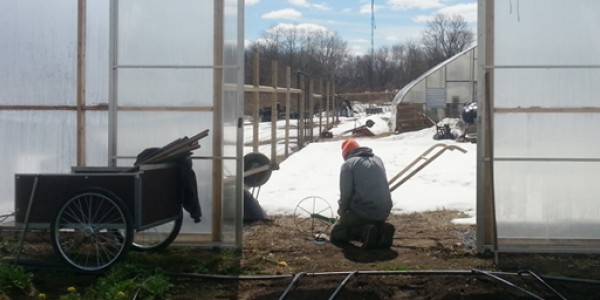Winter’s Work

Don’t let anyone tell you that farmers have the winter off. Last year, we were installing our new irrigation system until the 21st of December. And for the first time, we were able to harvest greens in our new hoop house and distribute storage crops into December.
Some of my favorite days as a farmer come after the new year when we receive the new seed catalogues in the mail. Tucked away by the fireplace watching the snow pile up, we pore over the catalogues while reminiscing about the triumphs and trials of the last season, and dreaming about new varieties to plant this upcoming year.
This is when we get down to the true dirty work of the farm. The numbers game: planning and ordering just enough seed to enable us to plant, harvest, and distribute last year’s total of 57,000 pounds of fresh organic produce. Take one crop for example, everybody’s favorite — tomatoes! How much seed does it take to grow 8,000 pounds of tomatoes?
The first thing to consider is how much field space will be allotted for tomatoes. We typically grow seven 80-foot rows in our hoop house and 20 rows in the field. Next comes the most exciting part, choosing the varieties to grow: heirlooms or hybrids; a proper mix of colors, tastes, and sizes; and a range from early to late-season maturity.
After selecting varieties and factoring in germination rates, we order. When the seed arrives, we plant in the greenhouse only three ounces of tomato seed. That seed germinates into
715 tomato plants that are transplanted into our field and hoop house. These plants can,
in a good year, yield a harvest of near 8,000 pounds, just over 11 pounds per plant, which
is then distributed to 10 pantries with the help of 2,200 volunteers.
See you in the tomato fields!

Photo by Kayleigh Boyle, Farm Coordinator